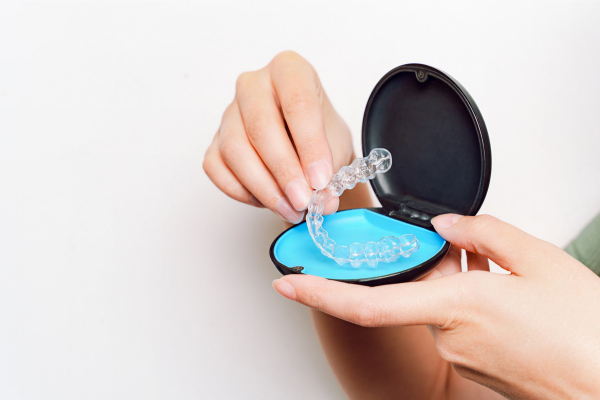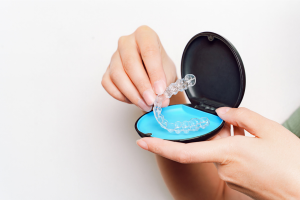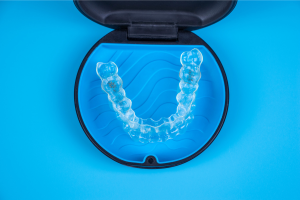If you’re considering invisible dental braces (clear aligners), one of the first questions you’ll ask is: how long will it take? The honest answer is that treatment time depends on the complexity of your bite and tooth movement, your biology, and how consistently you wear your aligners. In this guide we break down typical timelines for mild, moderate, and complex cases, explain what affects the pace of movement, and outline exactly what to expect at each stage of clear aligner treatment. This article is written for adults exploring invisible braces London options, but the principles apply broadly.
What “complexity” means in clear aligner treatment
Orthodontists classify cases by how far—and in what way—teeth need to move to reach a healthy, aesthetic position:
- Mild: Minor crowding or small gaps (typically ≤3 mm per arch), slight rotation of a few front teeth, no significant bite change needed.
- Moderate: Noticeable crowding or spacing (about 3–6 mm), multiple rotations, limited arch coordination, or a mild overbite/overjet adjustment.
- Complex: Severe crowding or spacing (>6 mm), pronounced bite discrepancies (deep bite, open bite, crossbite), multiple tooth movements in different planes, or movements that may benefit from auxiliaries (elastics, attachments, or in some cases extractions).
These categories aren’t rigid, but they help set realistic expectations for invisible braces treatment duration.
Typical timelines: mild vs moderate vs complex
Mild cases: roughly 3–6 months
For adults with small rotations or light crowding/spacing, clear aligners can be very efficient. You might receive 10–20 aligners per arch, changing trays every 7–10 days if advised. With good compliance (20–22 hours/day wear), many mild cases finish in 3–6 months, sometimes a touch sooner if movements are very small.
What speeds things up:
- Excellent wear time with minimal “off” hours
- Simple movements of front teeth only
- Early adoption of recommended accessories (small tooth-coloured attachments) to grip and rotate teeth efficiently
Moderate cases: roughly 6–12 months
Most adult patients fall here. You might have 20–40 aligners per arch, with planned corrections for rotations, levelling, and light bite refinement. Reviews are typically every 6–8 weeks. Many moderate cases complete in 6–12 months, sometimes with a short “refinement” phase at the end to polish the result.
What keeps you on track:
- Wearing aligners 20–22 hours daily
- Following instructions on elastics (if prescribed) to guide the bite
- Attending all review appointments so the clinician can course-correct early
Complex cases: roughly 12–24+ months
Complex movements take time, regardless of appliance type. Expect 40+ aligners per arch, potential use of elastics to correct bite, and possibly Interproximal Reduction (IPR)—tiny, controlled polishing between teeth to create micromillimetres of space. Some complex plans include extraction-based space closure (your clinician will advise if suitable with aligners) or staged correction where the arches are coordinated over longer intervals. Many complex cases complete in 12–24 months, occasionally longer if the bite needs careful, incremental correction.
Why complex takes longer:
- Multi-directional tooth control (tip, torque, rotation)
- Coordinating upper and lower arches for stable bite relationships
- Biological limits—safe, steady movement protects roots and gums
The stages of treatment (and the time each takes)
Understanding the full journey helps you see where time is spent:
- Consultation & records (same day to 1 week)
Your Invisible Braces London provider assesses your goals, gum health, and suitability. Digital scans, photos, and X-rays are taken. If gum disease or decay is present, it’s addressed before aligners start. - 3D planning & approval (1–3 weeks)
Your clinician designs a tooth-by-tooth plan—showing the sequence and pace of movement. You’ll preview the outcome and approve before manufacturing. This step is vital; smart planning shortens the road ahead. - Aligner manufacture & first fit (1–3 weeks)
Your personalised aligners are produced. At the fit appointment, you’ll receive wear instructions, your first series of trays, and, if needed, attachments are bonded—tiny, tooth-coloured shapes that help aligners “grip” teeth for precise control. - Active treatment (3–24+ months depending on complexity)
You’ll typically change trays every 7–10 days (your provider will specify), wearing them 20–22 hours/day. Reviews every 6–8 weeks allow checks, IPR if planned, and adjustments to elastic wear. - Refinement (optional, 4–12 weeks)
Think of this as “fine-tuning.” If small details remain—like a stubborn rotation—a short extra set of aligners improves the finish. Not everyone needs it, but it’s common and helps deliver a meticulous result. - Retention (lifelong)
Once your teeth are aligned, retainers (fixed, removable, or both) keep them there. Retention doesn’t add months of active treatment time, but it’s essential for protecting your investment long term.
Factors that speed up—or slow down—your case
Even two “moderate” cases can finish at different times. Here’s why:
- Wear time compliance: Aligners only work when they’re in. Consistent 20–22 hours/day wear is the single biggest determinant of speed.
- Biology & age: Adults move teeth predictably but sometimes more conservatively than teens. Healthy gums and bone respond better.
- Movement type: Small rotations and tipping are quicker than bodily movement or root torque. Bite corrections tend to take longer than simple alignment.
- Attachments & elastics: Saying yes to these tools accelerates difficult movements and bite correction.
- Oral health status: Gum inflammation slows predictable movement and may pause treatment for hygiene interventions.
- Lifestyle: Frequent snacking (which forces aligner removal), travel disruptions, or losing trays can add weeks.
- Complexities like extractions: If your plan involves extractions for crowding or profile harmony, expect a longer timeline with careful, staged closure.
Realistic scenarios (to help you self-assess)
- Mild spacing in the upper front teeth: 12–16 aligners, changed weekly. Estimated 3–4 months, plus optional 4–6 weeks refinement.
- Moderate crowding with a mild overbite: 26–32 aligners, weekly to 10-day changes, elastics for 8–12 weeks. Estimated 8–10 months.
- Complex deep bite with rotations and arch coordination: 45–60+ aligners, weekly changes, attachments throughout, elastics for 4–6 months, likely refinement. Estimated 18–24 months.
These are examples—not promises—because every smile behaves differently. Your clinician will give case-specific projections after assessing your scans and planning your clear aligner treatment.
Can aligners be faster than fixed braces?
For Clear Aligners for Adults, aligners can be as fast—or faster—for mild alignment and spacing, thanks to precise digital planning and the ability to stage movements efficiently. For complex bite changes, aligners can match fixed-brace timelines when the patient is diligent with wear and elastics. The deciding factor isn’t the appliance alone; it’s case selection, biological response, and compliance.
The role of check-ups (and why skipping them costs time)
Review visits every 6–8 weeks keep your case on schedule. Your clinician monitors tracking—whether teeth are following the plan. If an area falls behind, they may add a small amount of IPR, re-scan for refinements, or adjust elastic protocols. Catching tracking issues early saves months later.
Refinements: a normal, time-smart step
Patients sometimes worry that a refinement means failure. It doesn’t. Think of it like tailored finishing: a brief, targeted phase to perfect rotations, edges, or bite contacts. Most refinements add 4–12 weeks, but they often deliver the polished, symmetrical outcome adults expect from invisible dental braces.
Retainers: the “time insurance” you control
Teeth have memory. After movement, they naturally try to relapse—especially in the first year. Wearing your retainers as directed (nightly is common) protects your result without adding active treatment months. Many adults opt for a bonded (fixed) retainer behind the front teeth plus a removable night-time retainer for belt-and-braces stability.
How to finish faster without cutting corners
- Hit 20–22 hours daily: Set phone alerts after meals to reinsert aligners.
- Consolidate eating: Cut down “grazing” so aligners stay in.
- Use chewies (if advised): They help seat trays fully for precise force delivery.
- Say yes to attachments & elastics: They’re small trade-offs for big efficiency gains.
- Prioritise gum health: Brush after meals, floss daily, and use aligner-safe cleaners to avoid inflammation and staining.
- Communicate early: If a tray doesn’t fit or you lose one, contact your clinic the same day—small issues fixed early don’t snowball into months.
The bottom line on timelines
- Mild: ~3–6 months
- Moderate: ~6–12 months
- Complex: ~12–24+ months
Your exact duration for invisible braces treatment depends on complexity, biology, and wear time. The fastest, safest results come from meticulous planning plus consistent daily habits.
If you’re comparing invisible braces London options, book a consultation for a digital scan and a personalised timeline. With precise planning and your commitment to 20–22 hours/day wear, Clear Aligners for Adults can transform your smile on a clear, predictable schedule—whether your case is mild, moderate, or complex.






